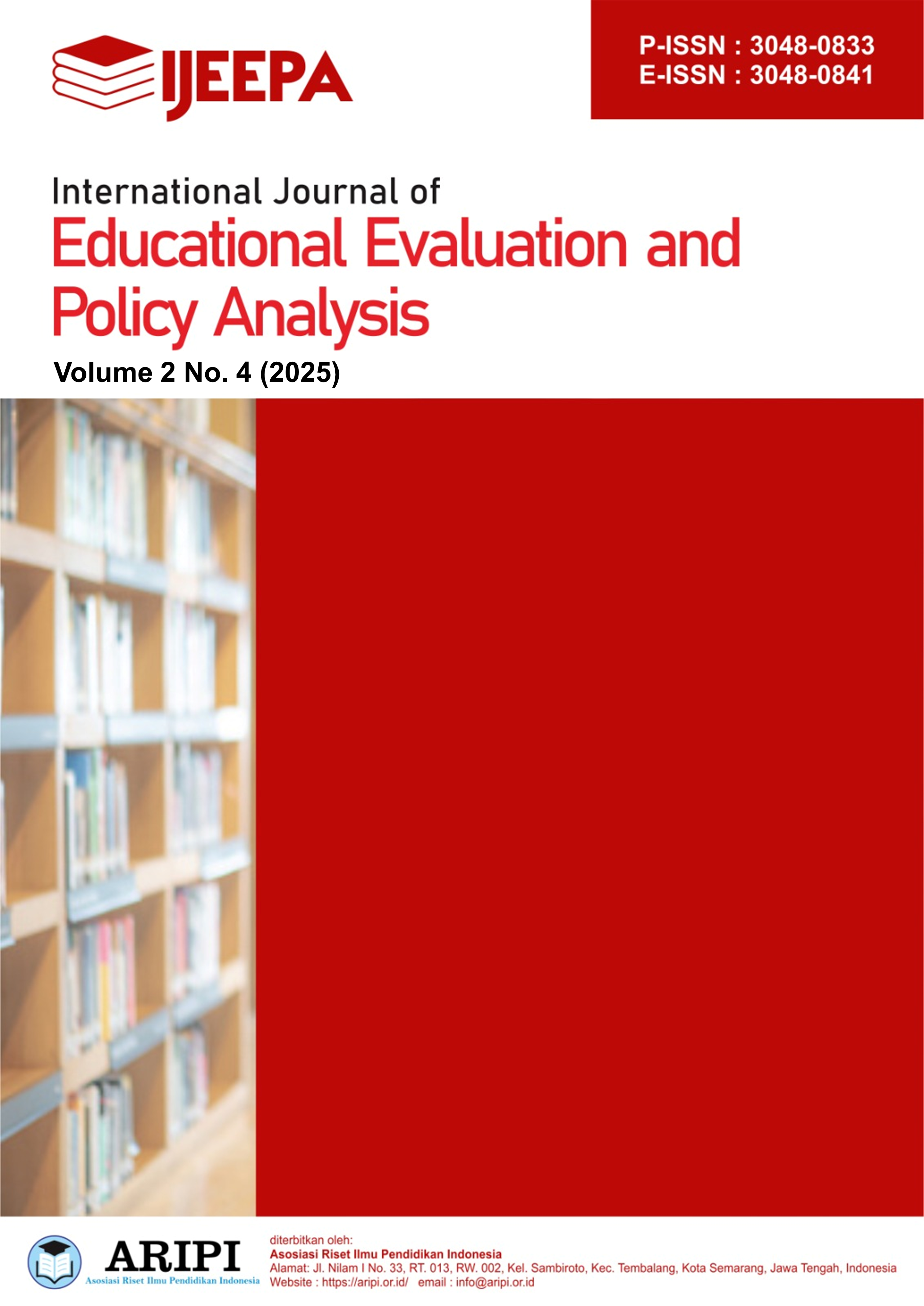Implementation of Drug Abuse Education Policy for Senior High School Students
DOI:
https://doi.org/10.62951/ijeepa.v2i4.406Keywords:
Drug Abuse Education, Policy Implementation, Preventive Education, Senior High School, StudentsAbstract
This study aims to analyze the implementation of the policy on drug abuse education programs for students in Senior High Schools. The main focus of this research is to examine the extent to which government and institutional policies have been effectively implemented within the school environment. The problem identified in the field indicates that the implementation of anti-drug education programs has not been optimal, due to limited coordination among stakeholders, inadequate resources, and the low level of teacher and student participation in preventive activities.This research employed a qualitative descriptive approach with a case study design conducted in several Senior High Schools that implemented drug abuse education programs. Data were collected through in-depth interviews, observations, and document analysis. The research questions focused on: (1) how the policy on drug abuse education programs is implemented in schools; (2) what factors support and hinder its implementation; and (3) how the implementation of the policy affects students’ understanding and attitudes toward drug abuse prevention.The results revealed that the policy implementation was partial and not yet fully integrated into the curriculum or school culture. The main supporting factors included the strong commitment of school principals and partnerships with the National Narcotics Board (BNN), while the main inhibiting factors were limited human resources, weak policy monitoring, and a lack of contextualized educational materials. Nevertheless, the program has had a positive impact on improving students’ awareness and preventive attitudes toward drug abuse, especially when activities were conducted collaboratively and sustainably.
References
Ash-Shiddiqy, A. R. (2023). Drug abuse prevention to increase prevention knowledge for vocational high school students. Bisma: The Journal of Counseling, 8(1). https://doi.org/10.23887/bisma.v8i1.84049
Badan Narkotika Nasional Republik Indonesia. (2023). Laporan akhir survei nasional penyalahgunaan narkoba tahun 2023. BNN.
Dinansi, C. I. K., Puspitawati, D., & Wanto, A. H. (2025). Policy implementation of the National Action Plan for the Prevention, Abuse and Illicit Drug Trafficking (P4GN): Towards strengthening national resilience. Jurnal Ilmu Sosial, 23(2), 95–111. https://doi.org/10.14710/jis.23.2.2024.95-111
Edwards, G. C. III. (1980). Implementing public policy. Congressional Quarterly Press.
Handayani, R. D., & Utari, D. (2024). Drug abuse prevention strategy in youth and student community in Indonesia: A case study. JYOA: Journal of Youth and Adolescent Health, 1(1). https://doi.org/10.61511/jyoa.v1i1.2024.774
Hidayat, R., Widodo, J., & Radjikan. (2022). Implementasi program pencegahan pemberantasan penyalahgunaan dan peredaran gelap narkoba (P4GN) di Kota Surabaya, Provinsi Jawa Timur. Praja Observer: Jurnal Penelitian Administrasi Publik, 9(1), 45–59. https://doi.org/10.36085/jmpkp.v3i1.1401
Husna, H. F., & Prabawati, I. (2019). Implementasi kebijakan pencegahan pemberantasan penyalahgunaan dan peredaran gelap narkoba (P4GN) di Badan Narkotika Nasional Kabupaten Tulungagung. Publika, 7(6). https://doi.org/10.31764/jiap.v6i2.649
Lickona, T. (1991). Educating for character: How our schools can teach respect and responsibility. Bantam Books.
Nurmala, I., Muthmainnah, R., Rachmayanti, R. D., Pertiwi, E. D., & Devi, Y. P. (2021). The intention of Indonesian high school students to participate in drug abuse prevention through peer education activities. Elementary Education Online, 20(1), 750–756. https://doi.org/10.17051/ilkonline.2021.01.67
Nutbeam, D. (2000). Health literacy as a public health goal: A challenge for contemporary health education and communication strategies into the 21st century. Health Promotion International, 15(3), 259–267. https://doi.org/10.1093/heapro/15.3.259
Riskiyani, S., et al. (2018). Determinants of student participation in drug prevention: A study among Indonesian youth. KnE Life Sciences.
Sumpena, W., Suryadi, A., Budimansyah, D., Hakam, K. A., & Dahliyana, A. (2020). The development of anti-drug abuse digital model for secondary school students in Indonesia. Journal of Critical Reviews, 7(18). https://doi.org/10.31838/jcr.07.18.300
Tonich, T. (2023). Stop Drug’s education by National Narcotics Agency: Implementation in schools. Jurnal JPPIPA.
Van Meter, D. S., & Van Horn, C. E. (1975). The policy implementation process: A conceptual framework. Administration & Society, 6(4), 445–488. https://doi.org/10.1177/009539977500600404
Wahyuningtyas, D. T., & Nurilla, R. D. (2021). The self-efficacy source of high schools' anti-drugs abuse cadres in Surabaya, Indonesia. Jurnal Promkes, 9(1), 1–10. https://doi.org/10.20473/jpk.V9.I1.2021.1-10.
Downloads
Published
Issue
Section
License
Copyright (c) 2025 International Journal of Educational Evaluation and Policy Analysis

This work is licensed under a Creative Commons Attribution-ShareAlike 4.0 International License.




